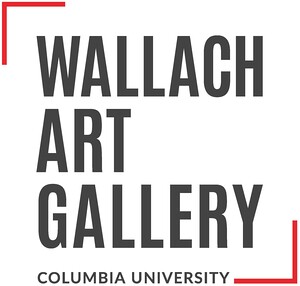December 4, 2021–March 12, 2022
Lenfest Center for the Arts, 6th Floor
615 W 129th St
New York, NY 10027
USA
Hours: Wednesday–Saturday 12–6pm
T +1 212 854 6800
wallach@columbia.edu
The Wallach Art Gallery at Columbia University’s Lenfest Center for the Arts is pleased to present What is the Use of Buddhist Art? This exhibition draws from the Buddhist objects in the Collection of Art Properties housed at Columbia University’s Avery Architectural & Fine Arts Library. What is the Use of Buddhist Art? includes sculptures, stelae, paintings, texts, and ritual implements from ancient Gandhara (Pakistan/India), Nepal, Tibet, China, and Japan.
What is the Use of Buddhist Art? Is curated by D. Max Moerman, Professor of Asian & Middle Eastern Cultures at Barnard College. “This exhibition is an opportunity to appreciate Buddhist visual and material culture in their contexts of practice and use: in rites of consecration and offering, visualization and protection, healing and fertility, and death and memorialization,” says Moerman.
The exhibition seeks to remove Buddhist objects from the modern European category of art and resituate them within the historical and ritual contexts of their production and use. Issues of agency, instrumentality, materiality, and presence in Buddhist visual culture are prioritized over art-historical concerns of form, style, and connoisseurship. By attending to the ritual function and religious use of Buddhist visual culture, What is the Use of Buddhist Art? emphasizes the social life of objects within Buddhist communities.
The varied uses include messages to those who will encounter the object in its contemporaneous present and distant future. As an example, the Votive Stele, dedicated by Monk Zhilang, dated 548, Eastern Wei dynasty, China, includes an inscription that identifies and celebrates the purpose of creating Buddhist objects and images: “We build stupas to mark our devotion, and we create image to express our dedication to the order.” Other objects such as the lacquered wood Seated Buddha from the late 15th century, Muromachi period, are made for personal devotion, worshipped privately for both worldly and otherworldly benefits. It has traces of gilding suggesting the golden glow it would have emanated in candle-lit sanctuaries. These objects function, within the exhibition context, as individual windows into Buddhist religious belief in practice.
What is the Use of Buddhist Art? coincides with the presentation of Object Relations: Indigenous Belongings and Time and Face: Daguerreotypes to Digital Prints. Collectively these exhibitions present more than 150 works of art and cultural heritage objects from Columbia’s Collection of Art Properties. Most on view to the public for the first time, they are a fraction of more than 13,000 objects in the holdings of the collection housed at the Avery Architectural & Fine Art Library. This wide-ranging collection, built over two centuries, has been acquired principally through donations from alumni and faculty, and includes antiquities, cultural heritage objects, and numerous examples of works of art through the twenty-first century. The mission of the collection is to support educational programs, curricular integration, research, and study.
The Wallach will present an array of online content–including a virtual tour, artist interviews, and virtual programming. The gallery is open to the general public Wednesdays through Saturdays. Online reservations are required. For more information on the exhibition, including gallery hours and visit registration links, visit here. All exhibitions are provided free of charge.
What is the Use of Buddhist Art? is supported by Frances Hsinyi Wu and Paul Pao-heng Yin, and the Center for Buddhist Studies.
The Wallach Art Gallery’s exhibition programs are made possible with support from the Miriam and Ira D. Wallach Endowment Fund, the Charina Endowment Fund, and the gallery’s patrons.





